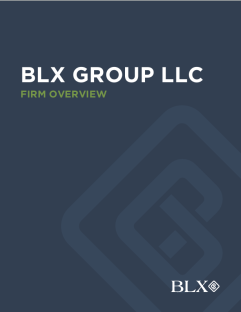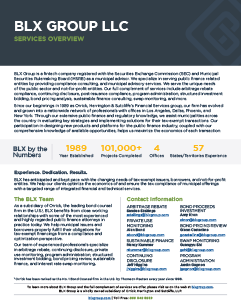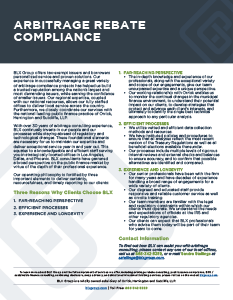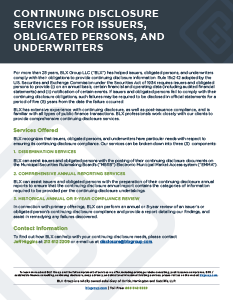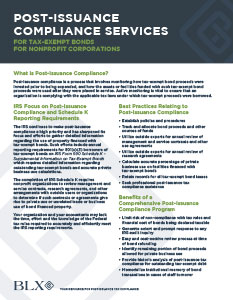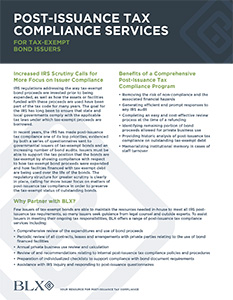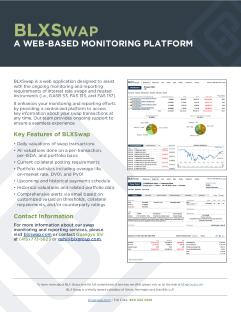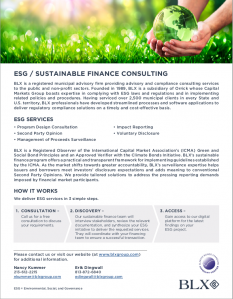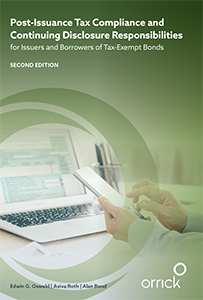
Orrick Tax Talk
WHAT EVERY ISSUER AND BORROWER NEEDS TO KNOW ABOUT STATE AND LOCAL MUNICIPAL BONDS
An educational video series by Orrick, the parent firm of BLX, focusing on the tax-exempt bond rules and the related complexities
In this series of videos, Orrick Tax Partners Ed Oswald and Larry Sobel discuss the tax rules and regulations relevant to issuers and borrowers of tax-exempt bonds.
For a preview of the Tax Talk video series, please watch below.
To access the videos, simply click on the topic you wish to view:
1. The ABC’s of Governmental Bonds
This video provides an introduction to governmental bonds, including who can issue governmental bonds, what types of projects may be financed with governmental bonds, and other basic tax rules relating to governmental bonds.
2. The ABC’s of 501(c)(3) Bonds
501(c)(3) bonds are a popular category of financing used in healthcare, education, and cultural institution financings under a conduit loan structure. The video includes a discussion of the additional regulatory requirements for 501(c)(3) bonds not otherwise applicable to governmental bonds.
Under IRS regulations, tax-exempt bonds are subject to strict private business use limitations which vary depending on whether the bonds are governmental bonds or 501(c)(3) bonds. The discussion covers certain uses and activities that frequently occur in tax-exempt bond financed facilities and the private business use implications of such activities. In addition, certain exceptions to the private business use rules are reviewed.
This test is one of the more complex rules regarding tax-exempt bonds and looks at all payments, both direct and indirect, by private parties that may be a user of the bond-financed facility. The discussion covers the limitations set forth in Treasury regulations regarding the amount of debt service on the bonds that may be secured by payments and/or securities of the private user.
5. Management Contracts (2021 Update – video removed)
NOTE: please see Video #13 for updated management and service contract rules found in Rev Proc 2017-13.
6. Sponsored Research Contracts
With increasing frequency, colleges and universities, medical schools, and hospitals are undertaking more research for outside parties such as industry members or the federal government, or “sponsored research.” Third parties are approaching these institutions because they have the capital facilities and expertise to perform the research that is being required. Research sponsored by an outside party can give rise to private business use if it does not satisfy one of the two allowable safe harbors provided by the IRS because the contract will be viewed as providing special legal entitlement to the sponsoring party. Ed and Larry review the safe harbors available and discuss how to measure or calculate private business use with respect to sponsored research contracts.
Private activity bonds are a specific type of municipal bond where the proceeds (and the facilities financed with those proceeds) are used by private entities instead of being used by a governmental unit. Private activity bonds include qualified 501(c)(3) bonds, exempt- facility bonds, single-family mortgage revenue bonds, small-issue manufacturing facility bonds, student loan bonds, qualified redevelopment bonds, and enterprise zone facility bonds. In this video, Ed and Larry discuss the characteristics of and restrictions related to private activity bonds.
8. Tax Credit Bonds (2018 Update – video removed)
NOTE: due to the enactment of the Tax Cuts and Jobs Act of 2017, tax credit bonds can no longer be issued. This video has been removed.
9. Post-Issuance Tax Compliance
Post-issuance tax compliance is a concept that deals with certain regulatory requirements that have been around for a long time but have only more recently been a primary focus of the IRS. These requirements relate mainly to how facilities financed with tax-exempt bonds are being used and are applicable over the term of the bonds plus the term of any refinancing. Because these are complex rules which are applicable for a long period of time, issuers and borrowers of tax-exempt debt will need to put in place an effective program to ensure compliance. Watch this video to learn about the components that should be part of a successful post-issuance tax compliance program.
In certain circumstances, an issuer or borrower of tax-exempt bonds may seek to change the use of bond financed property during the life of that property, which could include selling the property. This would constitute a “deliberate act” to move a bond finance property from compliant to non-compliant in relation to certain IRS rules. Certain “deliberate acts” are permitted, however, as long as the issuer or borrower takes advantage of certain self-help rules to help them fix the corresponding tax problem. Listen to this video to learn about self-help rules and the Voluntary Closing Agreement Program as related to change in use of tax-exempt bond financed property.
The IRS Tax-Exempt Bonds audit program is very active with 300-400 bond issues being audited at any time, with tax problems occurring in as many as 50% of the audits. These tax problems range from major to minor violations and issuers and borrowers should formulate informed responses when dealing with the IRS during an audit. Listen to this week’s video to learn more about the two types of Tax-Exempt Bonds audits: targeted (specific and unique to the transaction) and random (market segment approach, identifying certain types of deals or industries to focus on). In addition, Larry and Ed walk you through the process that issuers and borrowers can expect during and IRS audit of tax-exempt bonds.
12. Allocation of Bond Proceeds and Floating Equity (2018 Update – video added 8-9-2018)
Certain limitations exist with respect to private business use in tax-exempt financed facilities for both governmental and 501(c)(3) organizations. However, the Treasury Regulations also allow equity (proceeds other than proceed of a tax-exempt bond) in a project to reduce the applicable private business use. The rules, particularly relating to timing and to the definition of a “mixed use project”, are rigid and must be carefully applied. In this video, Larry and Ed review the rules relating to the application of “floating equity”. Understanding these rules will permit an organization to use equity in a smarter way to eliminate or negate private business use in within a mixed use project.
13. Management Contracts – New 2017 Rules (2018 Update – video added 8-9-2018)
Management contracts and other use agreements with outside parties may give rise to private business use if occurring in bond financed facilities. In early 2017, for the second time in 6 months, the IRS released updated guidance (Rev Proc 2017-13) with respect to the safe harbor requirements for contracts for services performed in tax-exempt bond-financed facilities. While this new revenue procedure is generally helpful, issuers and borrowers will need to carefully navigate these principle-based concepts to help minimize the impact that these contracts have on their private business use percentage. In this video, Ed and Larry review Rev Proc 2017-13 and how its application will impact the determination of private business use. Specific techniques and guidance for structuring contracts and agreements to be “safe harbor” compliant are also discussed.
If your organization utilizes tax-exempt bond financing, this series is relevant to you. Be sure to watch today to improve your organization’s best practices relating to tax-exempt bond compliance and to help safeguard against the risks associated with noncompliance.
